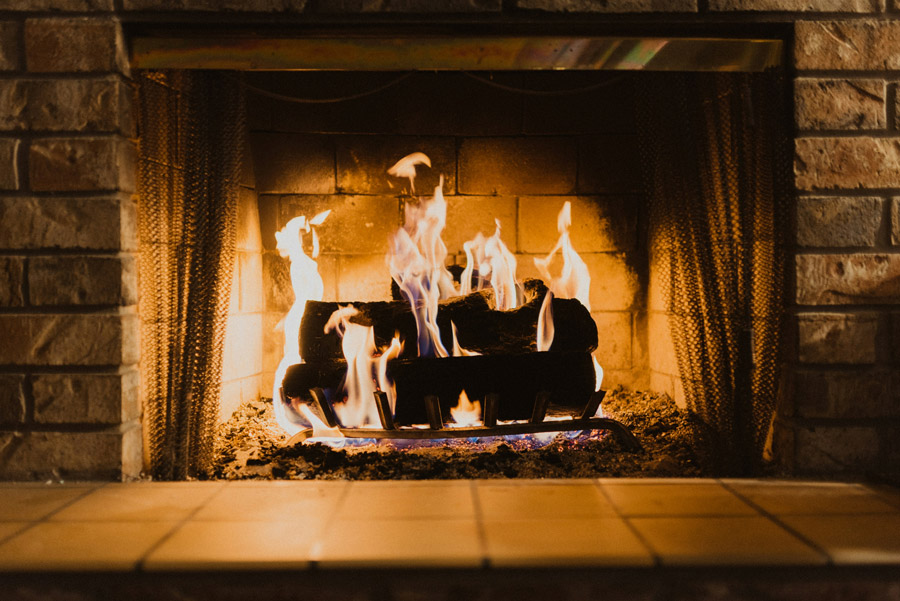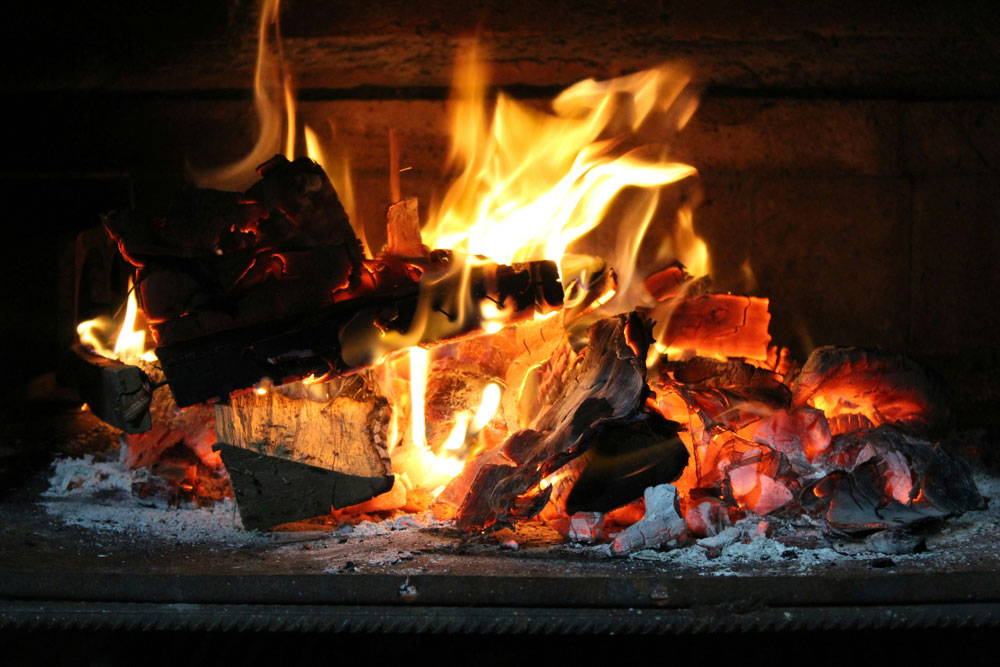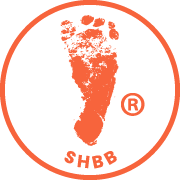Fireplace 411: Learn How to Use a Fireplace Safely
During cold St. Louis winters, a crackling fire in the fireplace adds ambiance and soothes those winter chills. Unfortunately, these wonderful home features also lead to a fire risk when used improperly. The Federal Emergency Management Agency (FEMA) explains that a dirty chimney leads to a chimney fire. In addition, other poor homeowner habits when using the fireplace also increase the risk of a fire.
Increase your knowledge about fireplace safety with Mehlville Fire Protection District’s Fireplace 411 tips and guidance. Learn more about how to use a fireplace safely and the distinct safety advantages or disadvantages of each type of fireplace.

Table of Contents:
The 411 on How to Use a Fireplace
- Annual Fireplace Maintenance
- Necessary Fireplace Tools
- The Danger of Burning Embers
Types of Fireplace Designs
- Electric Fireplace
- Gas Fireplace
- Infrared Fireplace Heater
- Outdoor Fireplace
- What is a Faux Fireplace?
The Parts of a Fireplace
- Fireplace Grates
- Fireplace Inserts
- Chimney Flue
- Flue Cap
- Fireplace Damper
Synopsis:
Before igniting the fireplace’s first fire of the season, learn all about the proper tools needed to tend the fire, the importance of annual fireplace maintenance, and increase your fireplace knowledge related to the different types of fireplaces and their unique design.
The 411 on How to Use a Fireplace
Starting a fire in the fireplace is simple. Just toss in some paper and logs, strike a match, and the fire is beautiful. Wait! Why is smoke billowing in the room?
While igniting a fire is relatively easy, tending a fire in a fireplace takes more effort than just tossing kindling into the pit and striking a match. Is the flue open? Was the fireplace inspected this year?
A closed flue leads to smoke billowing into the home. Smoke alarms will likely blare, and the fire will be anything but pleasant. However, the issue of a closed flue is only concerning for fireplaces that must be vented–gas and wood. Electric fireplaces work differently; they don’t require a chimney or flue, as they do not elicit a real flame.
Not all combustible wood or paper products should be used to feed the flame when using a standard wood-burning fireplace. Use only untreated wood, ensuring no harmful chemicals are released into the home. Never use gasoline or another fuel to feed a fire; this can lead to serious injuries or an out-of-control house fire.
Annual Fireplace Maintenance
All chimneys should be cleaned yearly to ensure they are safe for the season. For wood-burning fireplaces, schedule a professional to assess the chimney and clean out the space. A yearly inspection helps identify problems early that could be dangerous.
Necessary Fireplace Tools
Maintaining the fireplace and the fire in the fireplace requires a few necessary tools. The tools every homeowner needs for their fireplace include:
- Fireplace poker
- Fireplace broom
- Fireplace shovel
- Fireplace tongs
- A metal bucket
Why do individuals need all these tools, and how are they used? The poker is used to stir the fire; this allows individuals to rotate the wood and feed the flames. The broom and shovel allow easy ash cleanup; ensure the fire is extinguished before cleaning. Prongs, like the poker, aid in stirring the fire. All ashes must be removed after extinguishing the fire; collect them and place them in a metal bucket. The bucket must be made of metal as the ashes could be hot.

The Danger of Burning Embers
Embers are glowing pieces of wood or other debris from the fire; it’s not unusual for these embers to fly out of the fire on occasion. They are very dangerous, though.
The unpredictability of flying embers for wood-burning fireplaces requires that all flammable materials and furniture be kept at a safe distance from the fireplace. One tiny burning ember could ignite into a growing house fire.
Types of Fireplace Designs
Older and newer homes often feature a wood-burning fireplace, but this type is more common in older homes. New construction often includes (as an upgrade) a gas fireplace. Homeowners also could install an electric fireplace. What is the difference between all these designs?
Wood-Burning Fireplace
A wood-burning fireplace is your standard fireplace, typically designed from brick or stone. They feature an internal pit and release smoke through the chimney. Wood fireplaces require yearly maintenance and chimney cleaning. Only untreated wood should be used for wood-burning fireplaces.
Electric Fireplace
An electric fireplace creates the illusion of a flickering fireplace. An electric fireplace does not include a flame, and it also doesn’t require wood or other materials. Instead, a screen features a flickering image of a fire, and heated coils emit a small amount of heat. This type of fireplace offers little heat and is often incorporated into homes to create the warm ambiance of a fire. These fireplaces would be ideal in warmer climates.
Gas Fireplace
A gas fireplace requires natural gas for the heat and flame. These fireplaces are controlled via a simple switch, and some newer designs connect to a smartphone via an app. The downside of a gas fireplace is that it poses a risk of carbon monoxide poisoning. This is why yearly service appointments are advised.
Infrared Fireplace Heater
An infrared fireplace heater is not a fireplace; instead, this is a portable heater designed to look like a fireplace–complete with a flickering flame. These small heaters add ambiance and a bit of heat to a room, but when left unattended, they can pose a fire risk.
Outdoor Fireplace
An outdoor fireplace is typically designed as a wood-burning fireplace. These outdoor features add warmth and ambiance to an outdoor space and allow guests to stay warm during cooler nights. Homeowners should remember to schedule a yearly maintenance appointment for their outdoor fireplace.
What is a Faux Fireplace?
Faux is French for fake. A fake fireplace could refer to an electric fireplace or an infrared heater designed to look like a fireplace. Some faux fireplaces are old wood-burning ones that are no longer working.
The Anatomy of a Fireplace: Learn About the Parts of a Fireplace
Every fireplace design works a bit differently. To help individuals understand more about wood-burning fireplaces, we will explain the parts of the fireplace and the role of each part. The main parts of a wood-burning fireplace include:
- Fireplace grates
- Fireplace inserts
- Chimney flue
- Flue cap
- Fireplace camper
About Fireplace Grates
The grate is found in the pit of a wood-burning fireplace. The role of the grate is to hold the wood.
Fireplace Inserts
An insert provides a means to convert a wood-burning fireplace to a gas-burning fireplace. This helps improve energy efficiency, as wood-burning fireplaces allow lots of heat to escape the home.
Chimney Flue
The flue allows the smoke to escape; the flue is inside the chimney. Homeowners must schedule yearly flue cleanings, as debris, dead animals, and even a bird’s nest could lead to a chimney fire.
Flue Cap
A flue cap sits atop the chimney; its role is to keep out rain and prevent birds from nesting in the chimney during the spring and summer (when the fireplace is no longer in use). Always remember to cap the flue.
Fireplace Damper
The damper opens the top of the flue to enable smoke to escape. Always check that the damper has opened the flue before using the fireplace.
_______________________________
Fireplace Safety Tips
All types of fireplaces could ignite a house fire. Here are 10 safety tips to remember when using a fireplace on a cold winter day.
- For wood-burning fireplaces, make sure the damper opens the flue.
- Only feed a fire with untreated wood. In addition, check out Family Handyman’s list of woods to avoid burning.
- Teach children to stay away from fires.
- Never leave a wood-burning fireplace or gas fireplace burning when homeowners leave or go to sleep. Make sure all embers are extinguished. Unplug electrical fireplaces and portable heater fireplaces.
- Keep all flammable items and furniture far from a fireplace.
- Check smoke and carbon monoxide alarms before using a fireplace.
- Schedule a maintenance appointment before using a fireplace for the first time during the season.
- Never use gasoline or fuel to feed a fire.
- Keep a fire extinguisher nearby always.
- Clean out ashes after each use.
FAQ: More Fireplace 411
What type of fireplace is the cheapest?
Wood-burning fireplaces do not require the cost of gas or electricity. They are the cheapest to operate but not energy-efficient; wood-burning fireplaces lead to heat leaks in the home.
Is it safe to have a fire in my fireplace?
Yes, it’s safe to start a fire in a fireplace. However, multiple safety precautions should be followed to mitigate the risk of a house fire.
What is the floor in front of a fireplace called?
The section of tile or marble directly in front of the fireplace is known as the hearth; this is why some rooms in the home are known as hearth rooms.
Is it safe to let a wood-burning fireplace burn all night?
No! Extinguish the fire completely before going to bed. Never leave a fire burning unattended.
How do you put out a fire in the fireplace before bed?
Extinguish the flames by letting the fire gradually die out, then spread baking soda to extinguish the flames. Never use water to extinguish a fire in the fireplace.
> >Don’t have a fire place? Read about portable heaters safety here

